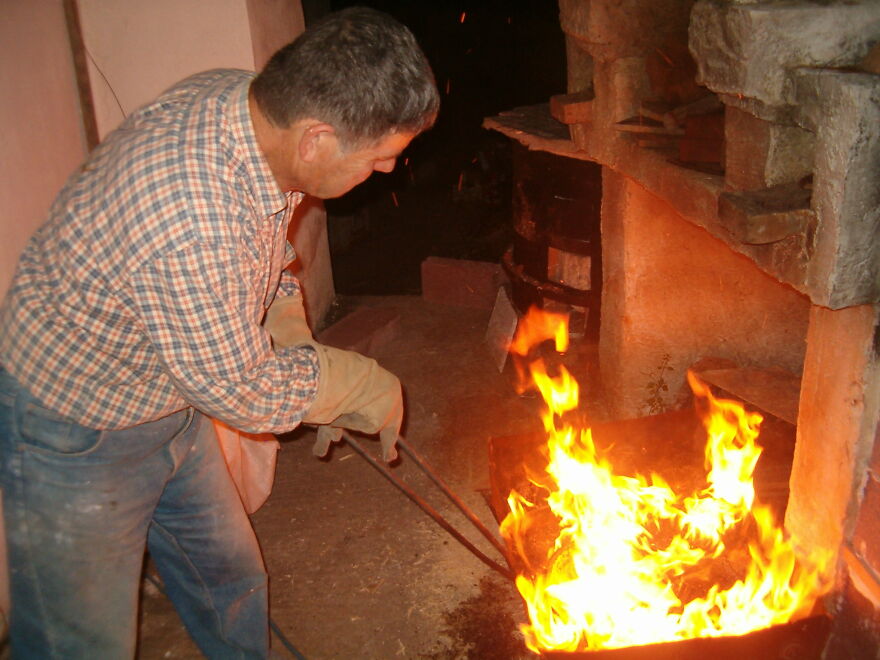The Amazing Art Of Raku Pottery
The art of Raku Pottery
Raku is a traditional Japanese style of ceramics that has been practiced for centuries. It’s been used to make tea bowls, sake cups and even plates. However, raku pottery has gained popularity in recent years because it is an interesting process that combines art and nature.
The raku technique originated in Japan. Raku pottery was born in the 17th century, when Arita potters began experimenting with an ancient technique that had been used for centuries in China and Korea. They discovered that if they put their pots into an open fire and allowed them to slowly burn away from the inside out, the ash would create beautiful patterns on the surface of each piece of pottery. The art form spread quickly throughout Japan until it reached Raku town in Saga Prefecture by around 1650; there it gained its name from Raku family members who were skilled at making this type of ware (raku means “red” in Japanese).
What is Raku?
Raku is a traditional Japanese ceramic firing technique that involves placing the pottery in a container of combustible material, such as sawdust and then igniting it. It’s been used for hundreds of years to create unique and beautiful artwork with an unpredictable outcome. Raku pots can be glazed or unglazed; they can be painted or left plain; they can be thrown on the wheel or handbuilt. But no matter how they’re made, raku potters are always excited by their finished works because they know how much luck plays into whether or not their piece will come out well during firing!
If you want to find out more about https://www.sifouniospottery.com/
The History of Raku
Raku originated in Japan at the start of the Edo period, which spanned from 1603 to 1868. The term raku comes from “raku ware,” meaning “fired in a kiln.” Raku became popular during this time because it was cheaper than other ceramics and easier to produce than pottery fired at high temperatures.
The technique involves firing ceramics over open flames, allowing them to absorb smoke and ash while they’re still hot enough for paint or glaze application. After being removed from their kilns, these pieces are often placed into containers full of water so that they can cool more slowly–this gives them their characteristic blackened appearance (known as “karasu” or crow).
The firing process for raku is unusual.
The firing process for raku is unusual. The pieces are fired in a kiln that is heated with wood, which burns very hot but slowly. The temperature of the kiln during firing can range from 900 degrees Fahrenheit to 1000 degrees Fahrenheit, depending on how long you leave your pots inside and how much oxygen they get to breathe during that time.
The clay used for raku pottery has been soaked in water until it is soft enough to carve or mold into shape; this makes it possible for artists to create sculptures without using molds or other tools. After being carved, the sculptures are dried out before being placed in kilns where they will be subjected to high heat over several days (or even weeks). During this time they’re allowed some freedom of movement so that they become covered with sooty smoke marks–this gives them their distinctive black finish!
It is a unique method that combines art and nature.
Raku pottery is a unique method that combines art and nature. The firing process is a combination of high heat and low oxygen, which results in the ceramics being burned at high temperatures. After they are removed from the kiln, they are cooled down before being placed in a container filled with combustible material such as sawdust or leaves. This causes them to burst into flames, creating an interesting effect on your work of art!
Raku is an ancient art form that is gaining popularity.
Raku is an ancient art form that is gaining popularity around the world. Raku pottery originated in Japan and has been practiced there for over 1,000 years. The technique involves firing a piece of pottery in a kiln at high temperatures, then putting it into an open fire where it is rapidly cooled by air flow and smoke particles. This process results in unique pieces with a random crackle pattern on the surface, giving each piece its own character and personality.
Raku pottery makes great home decor because it adds color to any room or space while being easy to care for: simply wipe off dust with a soft cloth if necessary!
Raku is an ancient technique that still fascinates many people today.
Raku is an ancient technique that still fascinates many people today. Raku pottery is a traditional Japanese art form that has been practiced for centuries. The raku process involves heating the piece in a wood-burning kiln, then removing it from the fire at just the right moment to create beautiful effects on its surface–a technique known as shino (white) or tannin (black).
Raku pottery can be made from almost any type of clay and fired in any color except blue or green, which must be glazed after firing. It’s not uncommon for artists to use recycled materials such as broken ceramics, porcelain pieces found around their homes or even old dishes! There are no rules when making raku pots; your imagination is really your only limitation when creating something new each time you fire up your kiln!
It was invented by accident when the potter Shoji Hamada (1894-1964) dropped a ceramic container into a fire to dry it out, and noticed that the color of the container had changed due to the oxidation process.
You may have heard of Raku Pottery, but do you know how it was invented? It was invented by accident when the potter Shoji Hamada (1894-1964) dropped a ceramic container into a fire to dry it out, and noticed that the color of the container had changed due to the oxidation process. This inspired him to experiment with other techniques that could change the color of his pieces without using glazes or paints.
Raku Pottery is still practiced today with great success by many artists around the world
Raku pottery is still practiced today with great success by many artists around the world. It’s also a unique artform that combines art and nature, as well as tradition and innovation.
From Ancient Kilns to Contemporary Ceramics
Raku pottery is a type of ceramic art that is practiced today. It’s not really even a specific type of pottery, but rather a way of firing ceramics in an open-air kiln.
The word “raku” comes from the Japanese verb rakuen, meaning “to relax.” In this context it refers to relaxing your mind while making pots and enjoying them afterward with friends or family–and maybe even drinking sake!
The Contemporary Art of Raku Pottery in Japan and the U.S.
What is Raku Pottery?
Raku pottery is a form of ceramics that dates back to the 17th century in Japan. In this style, pieces are fired in a kiln at high temperatures and then removed before they cool. The firing process creates an open surface on the piece which allows glazes to run down its sides and pool at its base when it’s dipped into water or tossed into an open flame during its final cooling stage. This technique results in unique variations between each piece as no two will look exactly alike!
Craftsmen, Artists and Collectors
Raku is a centuries-old technique that has been used by many of Japan’s greatest ceramic artists. It is a unique style of firing, which allows for the creation of unique pieces of art.
The raku technique requires a special type of clay that is fired at a low temperature (around 1,100 degrees Celsius), then placed in an open flame or in an electric kiln with no heat source for about 20 minutes to allow it to cool naturally. After this process has been completed, another layer of glaze is applied before the piece goes back into an open flame or electric kiln until it reaches its final temperature (around 1,000 degrees Celsius).
Raku pottery is an ancient artform that has been practiced for centuries. It is still popular today, with many artists around the world practicing it with great success. The beauty of raku lies in its simplicity, as well as its versatility; there are no rules when it comes to creating these pieces, so you can experiment with different colors and glazes until something sparks your imagination!
More info: sifouniospottery.com
The amazing art of Raku Pottery
The art of Raku Pottery
Raku is a traditional Japanese style of ceramics that has been practiced for centuries. It’s been used to make tea bowls, sake cups and even plates. However, raku pottery has gained popularity in recent years because it is an interesting process that combines art and nature.
The raku technique originated in Japan. Raku pottery was born in the 17th century, when Arita potters began experimenting with an ancient technique that had been used for centuries in China and Korea. They discovered that if they put their pots into an open fire and allowed them to slowly burn away from the inside out, the ash would create beautiful patterns on the surface of each piece of pottery. The art form spread quickly throughout Japan until it reached Raku town in Saga Prefecture by around 1650; there it gained its name from Raku family members who were skilled at making this type of ware (raku means “red” in Japanese).
What is Raku?
Raku is a traditional Japanese ceramic firing technique that involves placing the pottery in a container of combustible material, such as sawdust and then igniting it. It’s been used for hundreds of years to create unique and beautiful artwork with an unpredictable outcome. Raku pots can be glazed or unglazed; they can be painted or left plain; they can be thrown on the wheel or handbuilt. But no matter how they’re made, raku potters are always excited by their finished works because they know how much luck plays into whether or not their piece will come out well during firing!
If you want to find out more about https://www.sifouniospottery.com/
The History of Raku
Raku originated in Japan at the start of the Edo period, which spanned from 1603 to 1868. The term raku comes from “raku ware,” meaning “fired in a kiln.” Raku became popular during this time because it was cheaper than other ceramics and easier to produce than pottery fired at high temperatures.
The technique involves firing ceramics over open flames, allowing them to absorb smoke and ash while they’re still hot enough for paint or glaze application. After being removed from their kilns, these pieces are often placed into containers full of water so that they can cool more slowly–this gives them their characteristic blackened appearance (known as “karasu” or crow).
The firing process for raku is unusual.
The firing process for raku is unusual. The pieces are fired in a kiln that is heated with wood, which burns very hot but slowly. The temperature of the kiln during firing can range from 900 degrees Fahrenheit to 1000 degrees Fahrenheit, depending on how long you leave your pots inside and how much oxygen they get to breathe during that time.
The clay used for raku pottery has been soaked in water until it is soft enough to carve or mold into shape; this makes it possible for artists to create sculptures without using molds or other tools. After being carved, the sculptures are dried out before being placed in kilns where they will be subjected to high heat over several days (or even weeks). During this time they’re allowed some freedom of movement so that they become covered with sooty smoke marks–this gives them their distinctive black finish!
It is a unique method that combines art and nature.
Raku pottery is a unique method that combines art and nature. The firing process is a combination of high heat and low oxygen, which results in the ceramics being burned at high temperatures. After they are removed from the kiln, they are cooled down before being placed in a container filled with combustible material such as sawdust or leaves. This causes them to burst into flames, creating an interesting effect on your work of art!
Raku is an ancient art form that is gaining popularity.
Raku is an ancient art form that is gaining popularity around the world. Raku pottery originated in Japan and has been practiced there for over 1,000 years. The technique involves firing a piece of pottery in a kiln at high temperatures, then putting it into an open fire where it is rapidly cooled by air flow and smoke particles. This process results in unique pieces with a random crackle pattern on the surface, giving each piece its own character and personality.
Raku pottery makes great home decor because it adds color to any room or space while being easy to care for: simply wipe off dust with a soft cloth if necessary!
Raku is an ancient technique that still fascinates many people today.
Raku is an ancient technique that still fascinates many people today. Raku pottery is a traditional Japanese art form that has been practiced for centuries. The raku process involves heating the piece in a wood-burning kiln, then removing it from the fire at just the right moment to create beautiful effects on its surface–a technique known as shino (white) or tannin (black).
Raku pottery can be made from almost any type of clay and fired in any color except blue or green, which must be glazed after firing. It’s not uncommon for artists to use recycled materials such as broken ceramics, porcelain pieces found around their homes or even old dishes! There are no rules when making raku pots; your imagination is really your only limitation when creating something new each time you fire up your kiln!
It was invented by accident when the potter Shoji Hamada (1894-1964) dropped a ceramic container into a fire to dry it out, and noticed that the color of the container had changed due to the oxidation process.
You may have heard of Raku Pottery, but do you know how it was invented? It was invented by accident when the potter Shoji Hamada (1894-1964) dropped a ceramic container into a fire to dry it out, and noticed that the color of the container had changed due to the oxidation process. This inspired him to experiment with other techniques that could change the color of his pieces without using glazes or paints.
Raku Pottery is still practiced today with great success by many artists around the world
Raku pottery is still practiced today with great success by many artists around the world. It’s also a unique artform that combines art and nature, as well as tradition and innovation.
From Ancient Kilns to Contemporary Ceramics
Raku pottery is a type of ceramic art that is practiced today. It’s not really even a specific type of pottery, but rather a way of firing ceramics in an open-air kiln.
The word “raku” comes from the Japanese verb rakuen, meaning “to relax.” In this context it refers to relaxing your mind while making pots and enjoying them afterward with friends or family–and maybe even drinking sake!
The Contemporary Art of Raku Pottery in Japan and the U.S.
What is Raku Pottery?
Raku pottery is a form of ceramics that dates back to the 17th century in Japan. In this style, pieces are fired in a kiln at high temperatures and then removed before they cool. The firing process creates an open surface on the piece which allows glazes to run down its sides and pool at its base when it’s dipped into water or tossed into an open flame during its final cooling stage. This technique results in unique variations between each piece as no two will look exactly alike!
Craftsmen, Artists and Collectors
Raku is a centuries-old technique that has been used by many of Japan’s greatest ceramic artists. It is a unique style of firing, which allows for the creation of unique pieces of art.
The raku technique requires a special type of clay that is fired at a low temperature (around 1,100 degrees Celsius), then placed in an open flame or in an electric kiln with no heat source for about 20 minutes to allow it to cool naturally. After this process has been completed, another layer of glaze is applied before the piece goes back into an open flame or electric kiln until it reaches its final temperature (around 1,000 degrees Celsius).
Raku pottery is an ancient artform that has been practiced for centuries. It is still popular today, with many artists around the world practicing it with great success. The beauty of raku lies in its simplicity, as well as its versatility; there are no rules when it comes to creating these pieces, so you can experiment with different colors and glazes until something sparks your imagination!
More info: sifouniospottery.com
The amazing art of Raku Pottery
Are you F’in kidding!?! Not a single image of actual Raku!!?!! Come on. Do better.
Are you F’in kidding!?! Not a single image of actual Raku!!?!! Come on. Do better.

 Dark Mode
Dark Mode 

 No fees, cancel anytime
No fees, cancel anytime 









-1
1